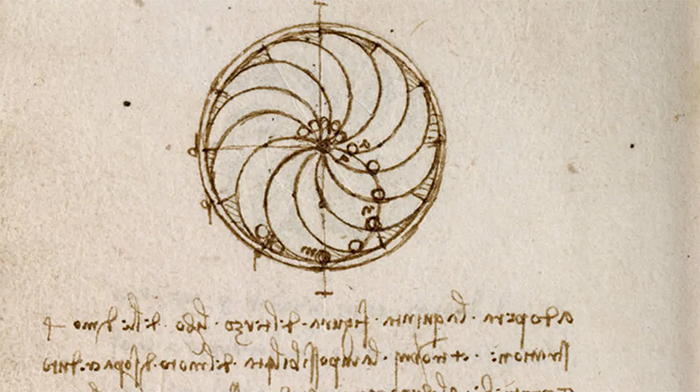Leonardo's Perpetual Motion Designs
Can an object set in motion, stay in motion? Sir Isaac Newton famously settled in the First Law of Motion. But da Vinci experimented with perpetual motion long before Newton proved the natural law.
Whether or not Leonardo ever designed a marble run—or used it to observe certain laws of physics, we do not know at present. But his notebooks do show designs that would have used marble-sized balls—or ball bearings—to test out perpetual motion.
On the web site, Leonardo da Vinci's Inventions, modern-day scientist Paulie Flynn describes how he has constructed four models based on designs in one of Leonardo’s codices, reconstructed to show the Maestro's designs in action.
Flynn reports, "Leonardo's first design is a simple overbalanced wheel. In this design, the weight of the ball bearings within the machine will always shift the center of gravity of the wheel away from the center point, thereby allowing continuous rotation. The design has four tracks in total, each with its own ball bearing running within it.
"His second design incorporates levers and a pawl and ratchet system into the overbalanced wheel. The design of the central hub of the wheel is such that the levers are held in a controlled position throughout the rotation of the wheel. The pawl and ratchet system ensures that the wheel can only rotate counter-clockwise as seen from the images below.
"His third, and possibly most elegant design, is for another overbalanced wheel. This design has twelve tracks in total with a ball bearing in each. Once again, the center of gravity in constantly shifted by the movement of the balls along the curved tracks during the rotation of the wheel.
"In my opinion, his fourth design is a masterpiece of mechanical engineering and conceptual design. It is almost too difficult to explain how it works using words, instead i will simply add some images of it and allow you to watch the video below.
Leonardo decided against investigating perpetual motion any further after he wrote (in mirror writing) beside the designs - "for every action there is an opposite and equal reaction" (The machines will not work). That quote is also Isaac Newton's Third Law of Motion, 200 years before Newton was born!"
Is Perpetual Motion Possible?
There hasn't been a good mechanism found for it so far. Do you think you could invent such an engine? Find out more about the mechanics behind it.
Want to Learn More?
- Simanek, Donald E. "Perpetual Futility" Lock Haven University, 30 Nov, -0001. http://www.lockhaven.edu/~dsimanek/museum/people/people.htm. Accessed on 4 Jul, 2018.
- "Perpetual Motion Machines" Leonardo Da Vinci's Inventions, 30 Nov, -0001. http://www.leonardodavincisinventions.com/mechanical-inventions/leonardo-perpetual-motion-machine/. Accessed on 9 Jul, 2018.
- Schramm, Netta. "Why don't perpetual motion machines ever work?" TED, TED-Ed, 30 Nov, -0001. https://ed.ted.com/lessons/why-don-t-perpetual-motion-machines-ever-work-netta-schramm. Accessed on 12 Jul, 2018.
